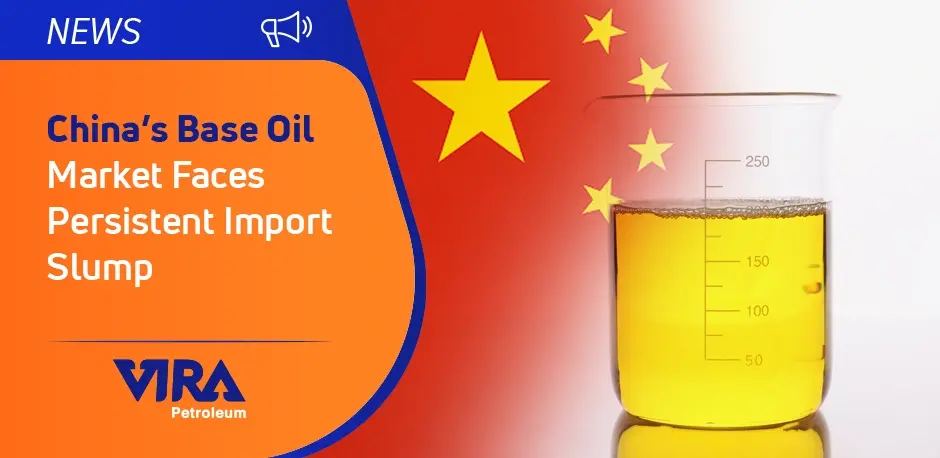Experts predict that base oil imports to China will remain stagnant this year, with little indication of a recovery in sight. In 2022, base oil imports to China experienced a significant decline of 16%, amounting to 1.8 million metric tons of API Group III base oils and high-viscosity Group II. Whitney Shi, a Shanghai-based analyst at ICIS, explained that this dip in imports was in line with the plummeted consumption of base oils and lubes in China. The COVID-19 pandemic played a significant role in the weak economy that followed, leading to a decrease in base oil consumption to about 6 million tons in 2022, down 14% from the previous year. Additionally, lube consumption decreased to less than 7 million tons, which is a five-year low, affecting both Chinese and foreign lube companies. Although China lifted all coronavirus restrictions in December, Shi stated that there is no indication of demand bouncing back anytime soon this year. Even though China’s base oil imports showed some growth in the first two months of 2023 compared to December, they still fell behind the same period in the previous year.
Order :Recycled Base Oil
The decrease in base oil imports to China is not solely due to economic turmoil, as Chinese companies have started producing their own Group III oils. For many years, China was a significant importer of Group III base oils from global suppliers such as SK Enmove and S-Oil in South Korea, as there were no domestic suppliers. However, in recent years, domestic companies like Lu’an Chemical Group, a state-owned coal company with a coal-to-liquids facility with a Group III production capacity of 350,000 t/y, have started producing Group III oils. These domestically produced oils are very competitive in terms of quality and price, attracting many Chinese lube blenders. Zhang Chenhui, an industry expert, notes that Lu’an’s base oil is priced at about ¥1,000 ($145.60) to ¥2,000 per ton cheaper than imported counterparts on average. Despite the decrease in imports, Shi and Zhang are not concerned for foreign base oil suppliers since Group III oils are in short supply globally. However, South Korean companies SK and GS Caltex, both of which are base oil exporters, declined to comment on the situation.
Order :Rubber Process Oil
According to recent reports, China’s base oil imports have decreased by 16% to 1.8 million metric tons in 2022, and it is unlikely that imports will recover this year. This drop in imports is not just because of the COVID-19 pandemic but also due to the emergence of domestic suppliers such as Lu’an Chemical Group, which produces Group III base oils with high-quality standards and competitive prices. This has led to a decrease in the imports of base oils to China. However, according to industry experts, the shortage of Group III oils globally is not likely to be a concern for foreign base oil suppliers.
On the other hand, some of China’s major refiners, like Sinopec, are focusing on exporting more base oil to foreign markets. Sinopec, which accounts for 90% of China’s total base oil exports, aims to sell 150,000 tons of base oil outside China in 2023. The company believes that it has the necessary experience and resources to sell base oil overseas and estimates the demand from Southeast Asian countries to be around 1 million tons per year.
While private refiners account for half of China’s total base oil output, they sell very little overseas, as they do not qualify for export tax refunds available to state-owned companies. However, helping these refiners sell base oils outside China could also reduce idle capacity, as about 60% of China’s Group II capacity went idle in 2022. This is despite the fact that aggressive expansions in the past decade have made China the number one producer of base oil in the world, with a capacity of more than 14 million tons per year.

